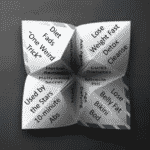Email marketing’s a power tool.
Get it right, and it’s a great way to grow your health club or wellness business.
Get it wrong, and you can waste time, money and even harm your business.
Watch for these ten common email marketing mistakes:
1. Right message, wrong time
Lots of health clubs send emails requesting referrals almost as soon as they file the new member’s paperwork.
It’s too soon.
People don’t refer their friends, coworkers and family members until they’ve actually had repeated positive experiences with your business. You have to earn the referral by giving them consistently satisfying experiences with your business.
Check in by phone with new members after 30 days. Send a satisfaction survey at the 45 day mark. Read all comments and resolve issues immediately. Then, at the 60 day mark, try asking for a referral.
2. Poor call-to-action placement
Remember that most readers glance at email. Many won’t scroll down to finish reading if it’s a long email.
So put your call to action – what you want them to do as a result of reading this marketing email – near the top, where it’s highly visible. Create urgency by including a deadline for response and including an attractive extra when they respond before that date.
3. Dumb graphics
Photos of equipment with no one using it. An empty locker room. An unoccupied pool. And half the time, it’s stock graphics – not even the equipment, lockers and pool at your facility!
Bottom-line: these pictures are irrelevant for marketing purposes.
What works? Real pictures of real customers. No, they’re not always beautiful. Or thin. But potential customers instantly connect with folks who look like them.
Most effective: big, candid shots that show faces. Least effective: posed headshots, PhotoShopped images.
4. Your words instead of customer words
The best marketing copy ever written comes from your customers.
When we develop online and offline marketing materials for wellness businesses, we almost always include some kind of customer testimonial or quotation.
Your customer’s words will always resonate more than words your marketing team pulls out of thin air.
5. Trite, vague, fluffy subject lines
Marketing emails only work if the subject line is motivating enough to get the recipient to open the email.
The best marketing email subject lines are specific and descriptive, with a deadline and/or bonus for quick action.
These cutesy subject lines don’t work because the puns have no marketing meaning:
From a fitness studio, “Stuck in a comfort zone? Let us MOVE you out!”
Often seen in October: “Fall back into a healthy lifestyle…”
And in April, the ever-popular “Spring into May Savings For New Members”
Vague and fluffy subject lines don’t work either:
“Shop Early And Save” (on what?)
“Renew Now” (renew what? by when? why?)
Why would anyone be curious or motivated to open these emails? It’s no surprise that they often produce open rates in the single digits.
6. Missed opportunities
Most wellness businesses underutilize targeted email marketing.
Three examples where targeted marketing emails can pay off:
- members whose credit card will be expiring soon
- “save” offers to members who have submitted a cancellation request
- reactivation of prior members and clients
7. Frantic emails
“Call us at xxx-xxx-xxxx!!! to schedule an appointment that will make your life better!!!
Like some of the subject lines, this half-baked call to action is vague and fluffy. What’s the appointment for? How will it make my life better?
Plus, it sounds like an infomercial or a discount furniture store.
Most readers won’t respond well to it.
8. Some emails should never be sent
Here’s the text of a recent email we got from a wellness center:
Our website has undergone a complete overhaul. It’s finally here! We just launched our new website redesign. We’re proud to announce our brand new look. We have always wanted the most innovative, user-friendly website. The look is new, but our prices, services and team are all the same. Only the site looks different!
Before you send a marketing email, ask yourself what you hope to accomplish. As written, this email has no call to action for its readers. There is no next step. In fact, the company states that nothing important has changed.
Did they want clients to post on new message boards? Replenish supplements using new online ordering capabilities? Book sessions with trainers and coaches using new scheduling abilities? Use new exercise and food logs and calculators?
Their readers will never know.
9. Too much text, verbiage, words, content
We received a marketing email from a customer retention firm that’s written like a traditional business letter. It’s very long and the first four paragraphs (200 words!) accomplish nothing from a marketing perspective.
Only in the fifth paragraph do they mention their results for industry clients. Why wait to mention these numbers? They’re great! They should be the headline!
10. Burying your best selling points
We just saw an email from a fitness software maker that starts with a long list of questions and features….then suggests a demo…then suggests you go to their website to “learn more.”
Only then – if you make it that far – do you see a long customer testimonial that contains some powerful information – specifically, that the quoted customer kicked out two well-known competitors and now saves hundreds of dollars monthly.
Frankly, that quotation – plus an invitation to a public webinar to be held on a stated date – would get the job done. Save the individual demo for anyone who attends the webinar and then wants to move to the next step. Ditch the rest of the email. Save the features for the webinar and demo.
That’s smart selling!
Health clubs should follow a similar model. Want to get potential customers to take the next step? Share great customer stories in your marketing emails instead of boring data about your square footage, quantity of treadmills and ellipticals, year your facility opened, etc.
11. Unrealistic call to action
Every marketing email should include a call to action – what do you want the reader to do next, as a result of reading this email?
Most health clubs are quick to say that the “next step” is to join.
But that’s not realistic.
A realistic call to action might be to attend a free seminar this Saturday with healthy living tips. Or possibly to tour.




